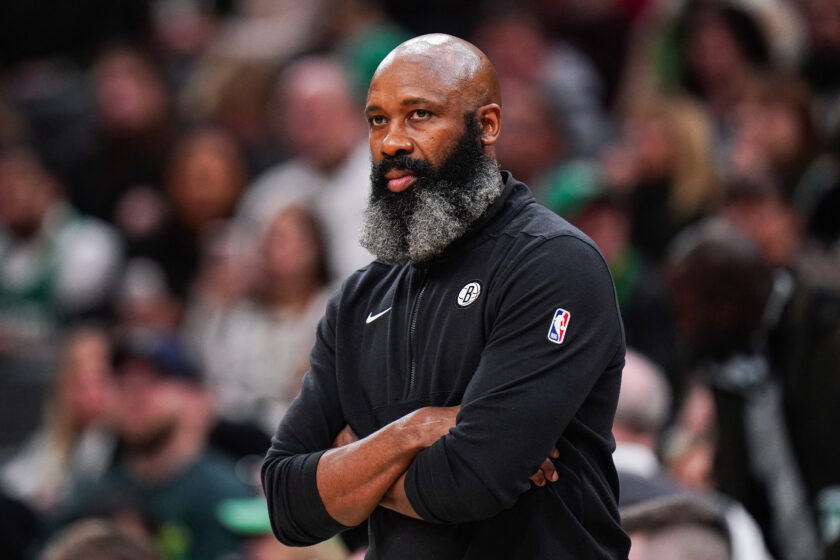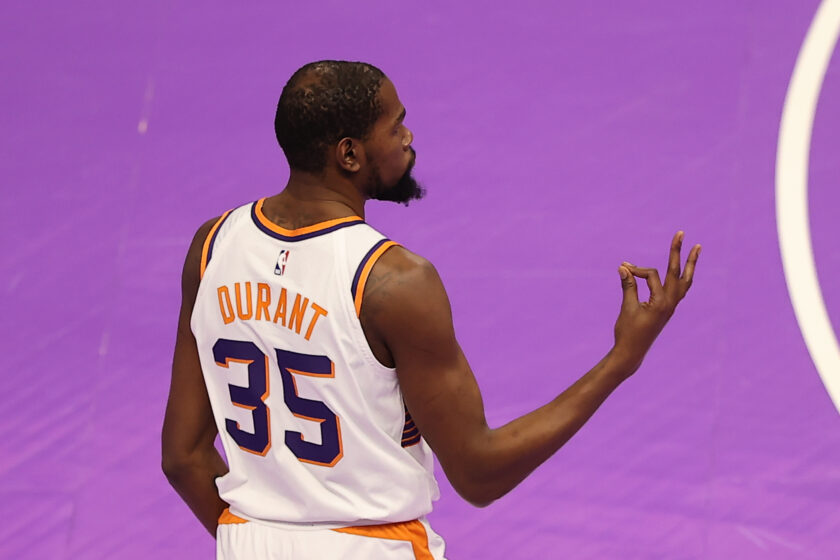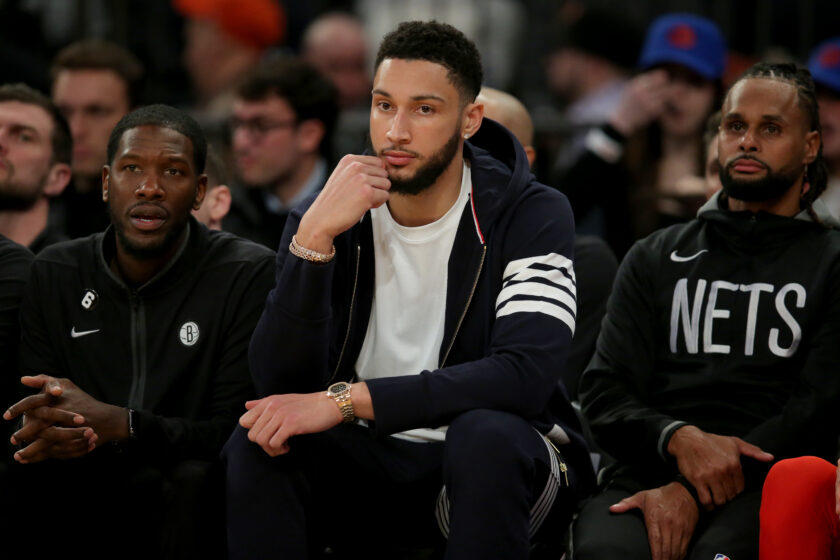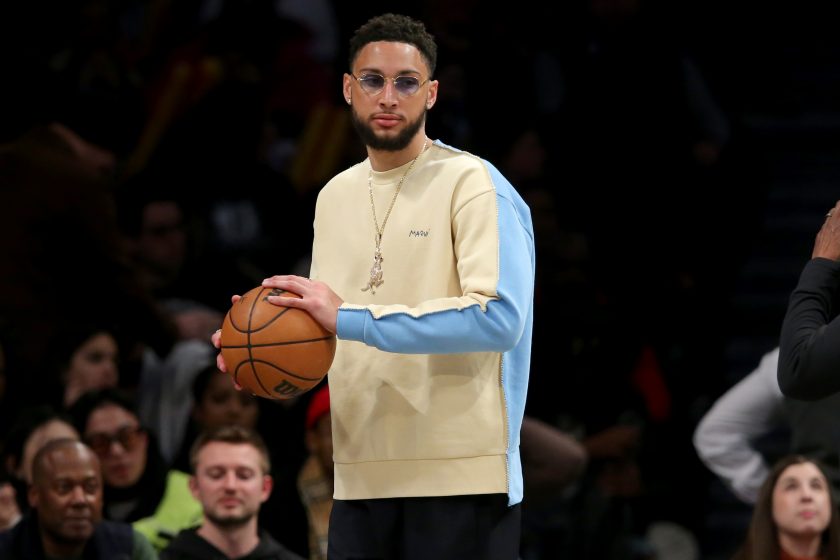The Spencer Dinwiddie deal is an absolute steal for the Brooklyn Nets
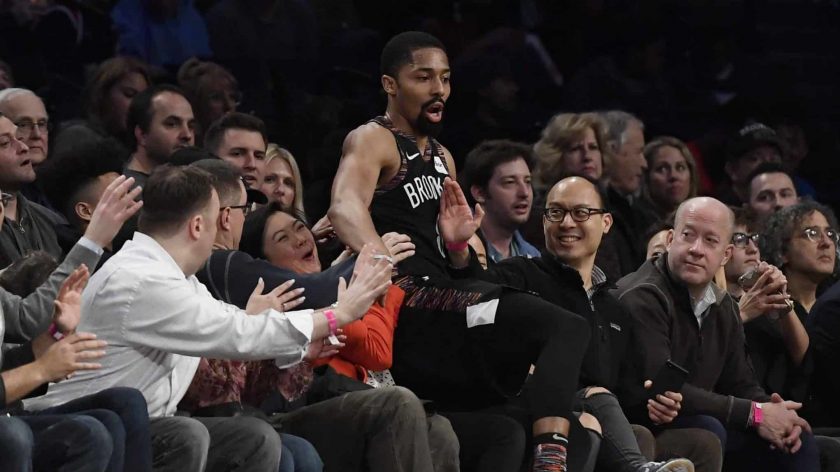
Spencer Dinwiddie‘s three-year, $34 million extension with the Brooklyn Nets is already one of the best contracts in the NBA.
The two-week starring contest between the Brooklyn Nets and their fifth-year point guard, Spencer Dinwiddie, finally ended Thursday. The two parties came to a three-year agreement with a player-option on the final season.
The announcement of this deal initially rose many eyebrows, including my own.
Next summer features a very strong free agent class; with big names such as Kevin Durant, Klay Thompson, Kawhi Leonard, Kyrie Irving, Kemba Walker, Jimmy Butler, and more. Prior to Dinwiddie’s deal, the Nets had around $56 million in cap space … just enough room to sign one of these major stars and a very solid complimentary player (perhaps Julius Randle for around $15 million per year?).
Considering that the deal wasn’t done right away, it seemed that the Nets were electing to hold out as much cap room as possible to build a contender in a shallow Eastern Conference.
This hypothesis was ree-jected like a buzzer-beater in an Anthony Davis Foot Locker commercial. It appears that Brooklyn’s front office sees Dinwiddie as part of their long-term plans.
It’s easy to see why, too.
Spencer Dinwiddie has been a stealth sixth-man of the year candidate this season, posting a career-high 17.2 points per game. His 17.6 points per game off the bench ranks first amongst all reserves in the NBA (with a minimum sample of 10 games played). When comparing his assist averages to off-the-bench players, Dinwiddie’s numbers are almost equally as impressive. Dinwiddie has been tossing out 4.9 dimes per game, second to only the ageless J.J. Barea; a man who is currently bouncing his third grandchild on his lap while singing Christmas Carols.
Dinwiddie is also shooting a career-best 47.4% from the field. This is a massive jump in efficiency from his 2017-2018 shooting mark of 38.7%. While Dinwiddie has improved slightly as a three-point shooter (36% this season, 32.6% last season), his main area of improvement has occurred around the rim.
[sc name=”Nets Link Related” link=”https://elitesportsny.com/2018/12/11/brooklyn-nets-rodions-kurucs-is-worthy-of-a-permanent-rotation-spot/” text=”Rodions Kurucs deserves a rotation spot” ]In 29 games, Dinwiddie has made an incredible 77 of his total 110 shots around the rim; good for 70%. Last season, Dinwiddie canned 120 of his 211 total restricted area shots; a subpar 56.9% shooting percentage. To put things into perspective, this jump in efficiency resembles the difference between Bradley Beal’s at rim-shooting and Ricky Rubio’s.
Dinwiddie’s at-rim scoring has been so good that it rivals the restricted-area scoring numbers of Clint Capela and Rudy Gobert. (Both of whom scored a majority of their points off of easy dunks). When comparing Spencer Dinwiddie’s at-rim shooting to other guards, Dinwiddie is third to only contract-year Eric Bledsoe and, oddly enough, Klay Thomspon. (Keep in mind, Thompson’s 60 total field goals is a much smaller sample. Not to mention, given the shooting on Golden State’s roster, many of these field goals are open layups).
[sc name=”Nets Center” ]In LeVert’s absence, Dinwiddie has only seen his at-rim shooting improve. In the 16 games that Dinwiddie has played without Caris LeVert, he has made a stunning 53 out of his 72 total at-rim shots. Folks, that’s good 73.6%, which is insane for someone playing at the guard position. If these numbers were stretched out over a full season, there are only four guards to finish with a better at-rim percentage in a single season: Reggie Miller, Andre Iguodala, Jose Calderon, and LeBron James (although he barely counts as a guard).
Now obviously, comparing a 16 game sample to a full season is completely ridiculous. But it does give you an idea of just how fantastic Dinwiddie has been from this area of the court.
Dinwiddie’s domination in the restricted area can be partially attributed to his stature. Dinwiddie measures in at 6-foot-6. This is huge for the point-guard position. The only taller lead-guards in the NBA are Ben Simmons, Evan Turner, and Shaun Livingston. What separates him from other towering guards, such as Lonzo Ball, Frank Ntilikina, or Michael-Carter Williams, is that Dinwiddie also has the tools to create mismatches all over the court.

When being guarded by big-men, Dinwiddie can use his elite footwork, nauseating crossovers, and ambidextrous finishes to blow by taller defenders. Dinwiddie also has excellent awareness of his defender’s positioning and he uses this to shield his man away from the ball. He primarily uses this when being guarded by smaller guys such as Landry Shamet or Donovan Mitchell (seen in the video above).
Notice how he frequently gets the smaller defender on his backside before exploding to the rim. If the smaller opponent does manage to stay with him, Dinwiddie can simply shoot over their outstretched arms or draw a contact foul.
Occasionally, Dinwiddie will even surprise the crowd and elevate for a two-handed flush. This type of athleticism is seldom seen at the Barclays Center, as the Nets rank 26th out of 30 teams in dunks per game.

Being a mismatch nightmare at all times is what makes Dinwiddie stand-out as a player. It’s the main reason why Dinwiddie earned a contract before his teammate, D’Angelo Russell. Simply put, the team felt that they could go out and find another D’Angelo Russell. Dinwiddie, on the other hand, is a player they felt they couldn’t replicate.
Even if Dinwiddie never amounts to much more than what he is, that’s okay. At the moment, he’s an overqualified backup (and probably a below-average starter). If his improvement stops today, he would still be one of the best backups in the league; alongside Shaun Livingston, Patrick Beverley, Lou Williams, Dennis Schroeder, and Patty Mills. (Keep in mind, all of these players have played for contenders at some point in their careers).
If he does continue to improve, perhaps by cleaning up his crunch-time decision-making or by becoming an elite three-point shooter, there’s a chance he could advance to the All-Star Game. The history of players entering the league as backup point guards and then growing to All-Star status is not great; only Isaiah Thomas, Kyle Lowry, Chauncey Billups, and Goran Dragic come to mind in recent years. Given his physical tools and strong fundamentals on offense, there is a slight chance that he could rise to the occasion.
[sc name=”Elite Access” ]This has been reported ad nauseam, but his contract is extremely team friendly. At around $11.3 million per year, Dinwiddie is making about the same amount of money as John Henson, Alec Burkes, and Tony Snell. Now, obviously, Dinwiddie is a much better player than any of these guys, which goes to show you just how much the team lucked out.
With Dinwiddie here to stay, the Brooklyn Nets have countless options when looking at the future. If the team chooses to resign D’Angelo Russell, the Nets can continue to roll out 48 minutes of excellent lead-guard play. If Brooklyn decides to let go of Russell but is unable to acquire another starting point-guard, Dinwiddie is a good enough facilitator to keep the team afloat. Should, for whatever reason, things don’t work out between the two parties (perhaps Kyrie or Kemba comes to town?), Dinwiddie’s cheap contract will make him an attractive option to other franchises.
Regardless of what happens, Brooklyn scored a huge win this week. Welcome back, Spencer Dinwiddie.
[sc name=”Nets Link Next” link=”https://elitesportsny.com/2018/12/13/brooklyn-nets-news-extend-spencer-dinwiddie-to-multiyear-deal/” text=”Nets Extend Spencer Dinwiddie With Multiyear Deal” ] [sc name=”Nets Footer” ]An NBA fanatic who specializes in the advanced analytics of the game. I cover the Brooklyn Nets here in the city. Follow me on Twitter for semi-witty basketball tweets. @MattBrooksNBA

